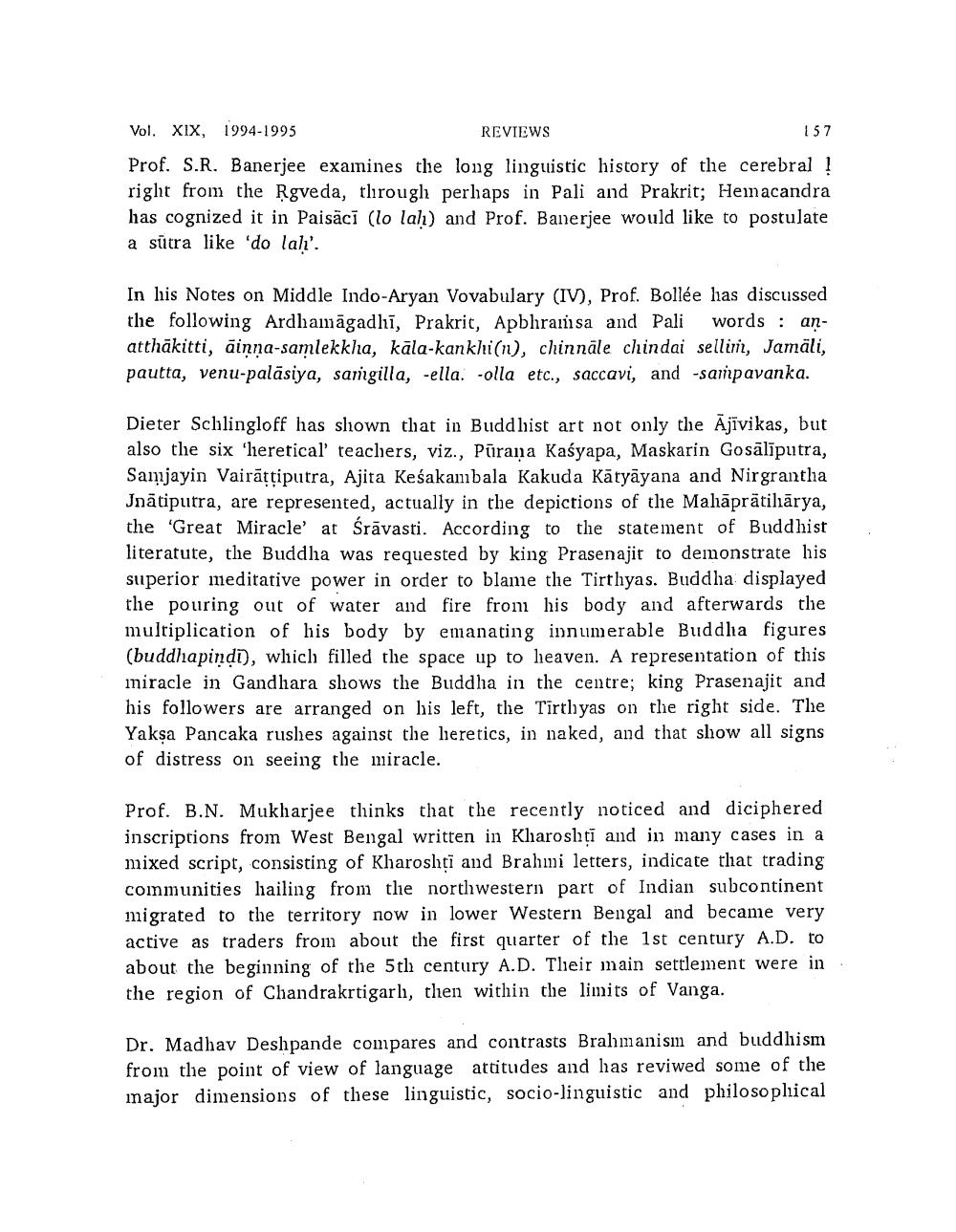________________
Vol. XIX, 1994-1995
Prof. S.R. Banerjee examines the long linguistic history of the cerebral ! right from the Ṛgveda, through perhaps in Pali and Prakrit; Hemacandra has cognized it in Paisaci (lo lah) and Prof. Banerjee would like to postulate a sûra like 'do lal'.
REVIEWS
157
In his Notes on Middle Indo-Aryan Vovabulary (IV), Prof. Bollée has discussed the following Ardhamägadhi, Prakrit, Apbhramsa and Pali words: anatthäkitti, ainṇa-samlekkla, kala-kankhi(n), chinnale chindai sellin, Jamāli, pautta, venu-palasiya, samgilla, ella. -olla etc., saccavi, and -sampavanka.
Dieter Schlingloff has shown that in Buddhist art not only the Ajīvikas, but also the six heretical' teachers, viz., Purana Kasyapa, Maskarin Gosäliputra, Sanjayin Vairāṭṭiputra, Ajita Keśakambala Kakuda Katyayana and Nirgrantha Jnatiputra, are represented, actually in the depictions of the Mahāprātihārya, the 'Great Miracle' at Śrāvasti. According to the statement of Buddhist literatute, the Buddha was requested by king Prasenajit to demonstrate his superior meditative power in order to blame the Tirthyas. Buddha displayed the pouring out of water and fire from his body and afterwards the multiplication of his body by emanating innumerable Buddha figures (buddhapindi), which filled the space up to heaven. A representation of this miracle in Gandhara shows the Buddha in the centre; king Prasenajit and his followers are arranged on his left, the Tirthyas on the right side. The Yaksa Pancaka rushes against the heretics, in naked, and that show all signs of distress on seeing the miracle.
Prof. B.N. Mukharjee thinks that the recently noticed and diciphered inscriptions from West Bengal written in Kharoshti and in many cases in at mixed script, consisting of Kharoshți and Brahmi letters, indicate that trading. communities hailing from the northwestern part of Indian subcontinent migrated to the territory now in lower Western Bengal and became very active as traders from about the first quarter of the 1st century A.D. to about the beginning of the 5th century A.D. Their main settlement were in the region of Chandrakrtigarh, then within the limits of Vanga.
Dr. Madhav Deshpande compares and contrasts Brahmanism and buddhism from the point of view of language attitudes and has reviwed some of the major dimensions of these linguistic, socio-linguistic and philosophical




